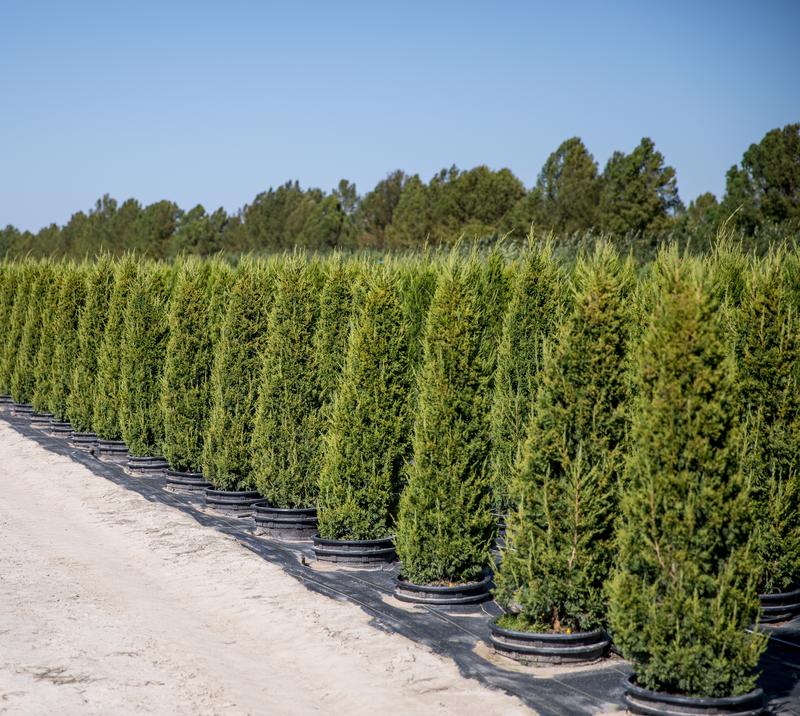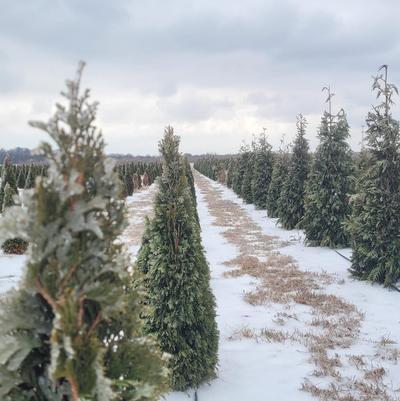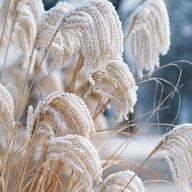Upright Junipers Vs. Arborvitae (Reviews)
Upright conifers have many uses, from hedges and screens to specimen plants. Upright Juniper and Arborvitae can both be used for the same purposes. Are they actually the same genus? Which should you plant? Let’s compare them.

Height and Shape of Junipers vs. Arborvitae
Height – Of course, the final height of the plant depends on the cultivar, but large Arborvitae cultivars can grow taller than large juniper cultivars. We are talking 70 feet versus 50 feet so those are probably best used as specimen trees or to reforest the back 40. On the opposite end of the yardstick you have a better selection of upright Juniper varieties that will stay small and retain their shapes. But if you want something in the middle to use for screens or hedges, both Junipers and Arborvitae have varieties that can fill that need.
Shape – Arborvitae are well known for their pyramidal shape. Younger plants retain that shape without much pruning required. As they grow older and larger, the trees tend to open up more and some can become pendulous. Juniper cultivars can be pyramidal, conical or columnar in their growth habit. They will also tolerate creative pruning, which make them suitable for topiaries or Bonsai-style manipulation. Junipers grow a little wilder than Arborvitae and will require more maintenance to keep order.
Culture and Color of Junipers and Arborvitae
Culture – Both Junipers and Arborvitae tolerate a variety of soil conditions. Although deep, fertile soil is preferred, both will grow in sandy, rocky or clay soils. Neither likes saturated soils although the Arborvitae will tolerate boggier conditions while Junipers will tolerate drier conditions. And while pH is not much of an issue, Arborvitae thrive in slightly more alkaline soils.
Color – The days when conifers are only green are long past. Upright Juniper cultivars can be 50 shades of green, gold, blue or silver. The upright Arborvitae can be various shades of green, yellow or bluish, and the branches can be tipped in gold or white. These color choices give landscapers and homeowners a plethora of design options, allowing these trees to be used in unique applications.
Nomenclature – Taxonomically speaking, Junipers are in the genus Juniperus while Arborvitae are in the genus Thuja. Both are Gymnosporangia or cone-bearing plants, even though Junipers produce female cones with unusually fleshy scales that are fused together to give the appearance of berries. So then, what is a white cedar - or a red cedar for that matter? Eastern Arborvitae, American Arborvitae, white cedar, western redcedar and Thuja all refer to the Arborvitae trees. Eastern red cedar, whose wood is often used to line drawers and hope chests because of its fragrance and moth repelling properties, is not really a cedar at all, but a Juniper (Juniperus virginiana).
Facts About Junipers and Arborvitae
Did you know? – Juniper has one of the largest ranges of any plant in the world. There are several species native to North America. Legend tells us that pioneers would often plant a red cedar tree near the grave of those who died along the trail. These trees can still be seen in the oldest part of many cemeteries. Junipers are fragrant and in the country, are often cut and used as Christmas trees. Gin was created in the Netherlands in the 17th century and the name is short for the Dutch word for juniper (genever), which is the primary flavoring of that drink. Native Americans found several medicinal uses for Juniper.
Arborvitae is Latin for “tree of life.” Canadian natives would brew a tea from the needles that was rich in vitamin C and helped prevent scurvy. The tough, lightweight wood has been used for guitar sounding boards, beehives and shingles. Medicinally it has found several topical uses such as treating warts, ringworm and thrush.

